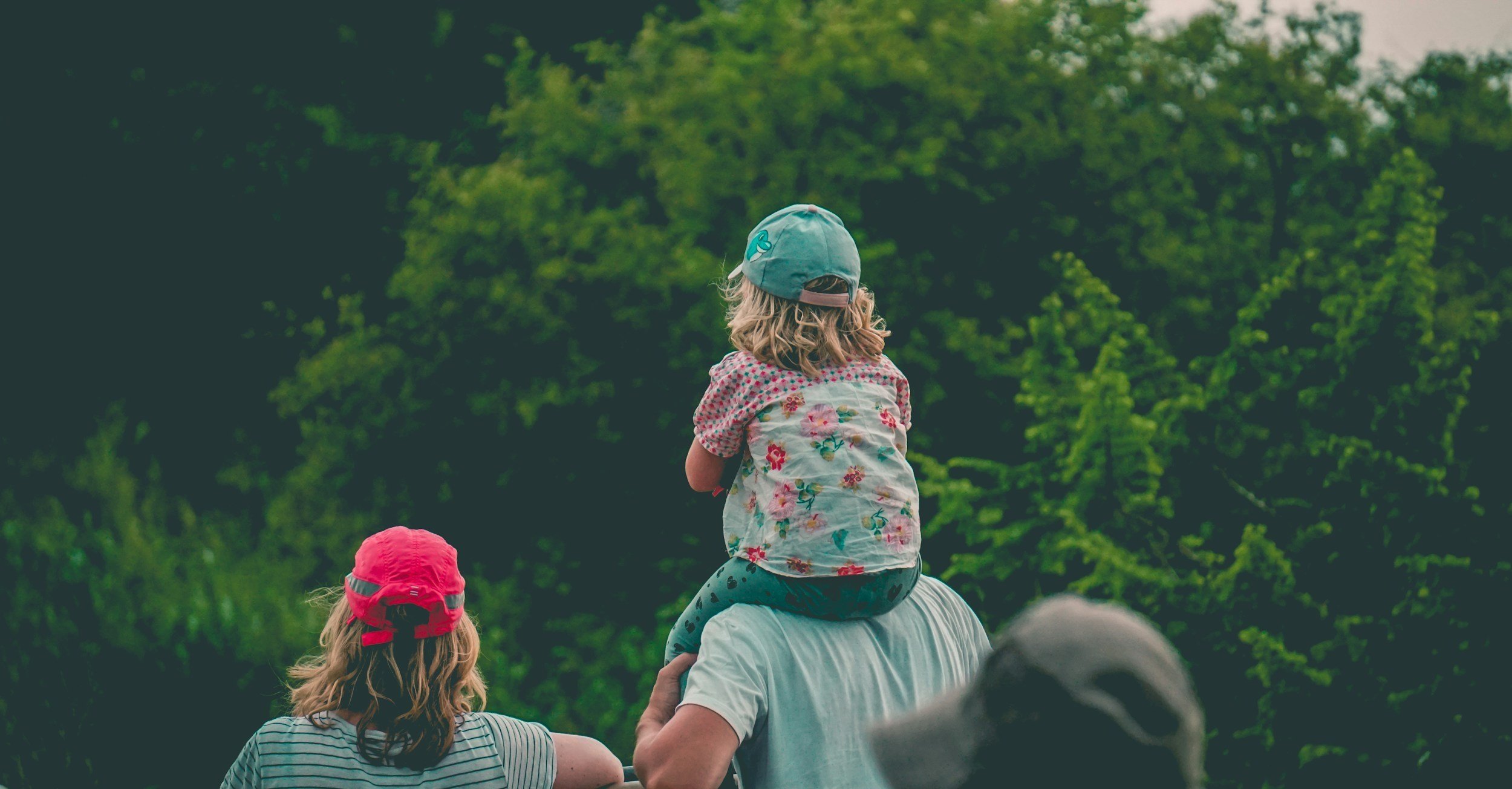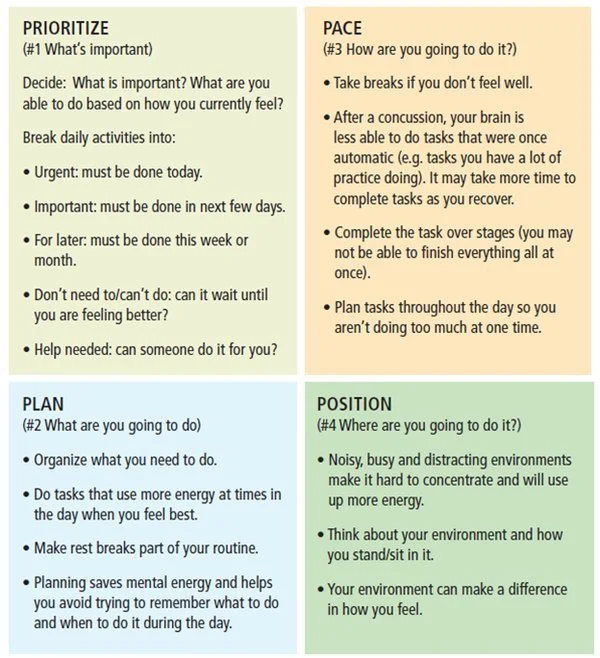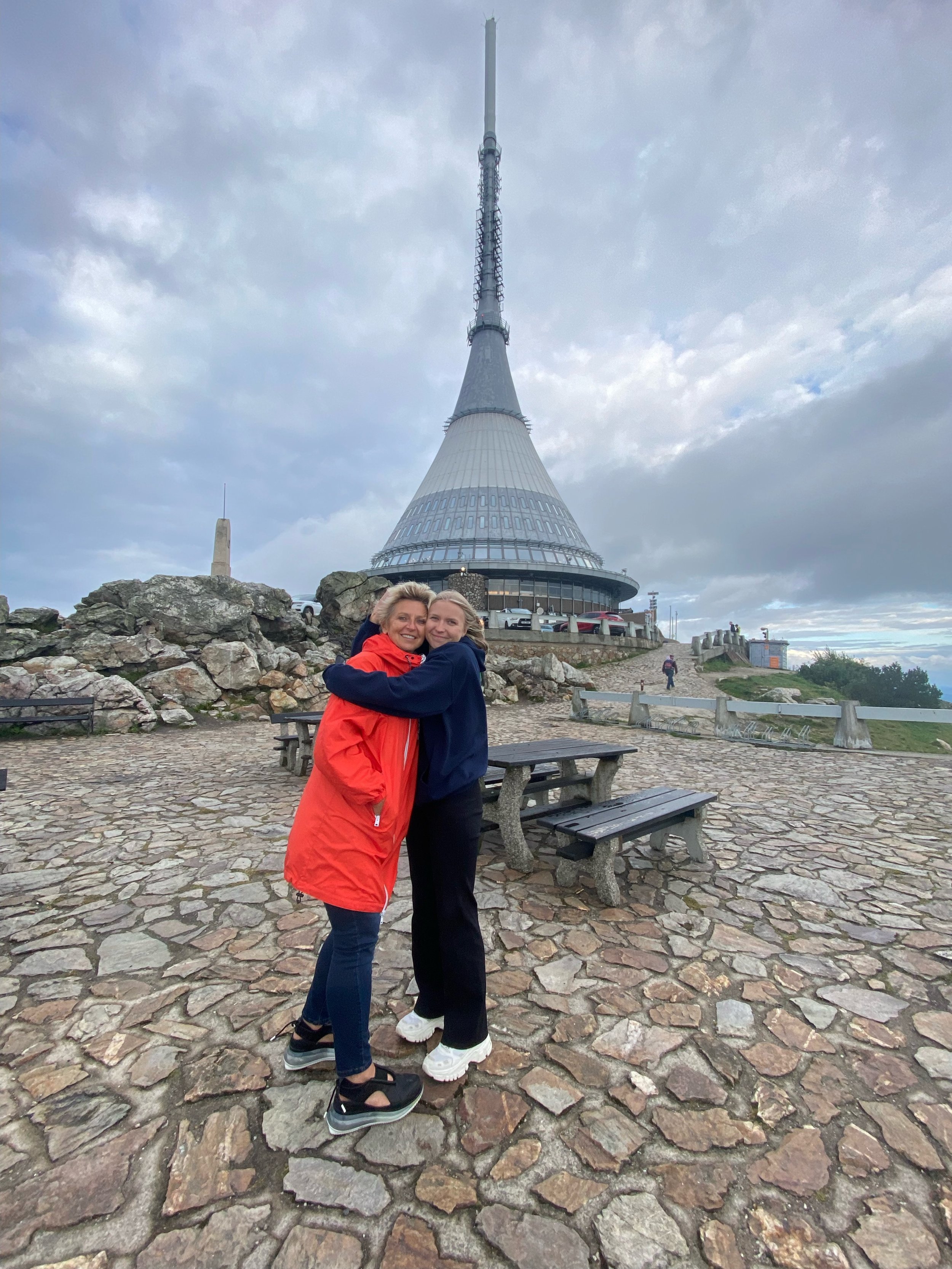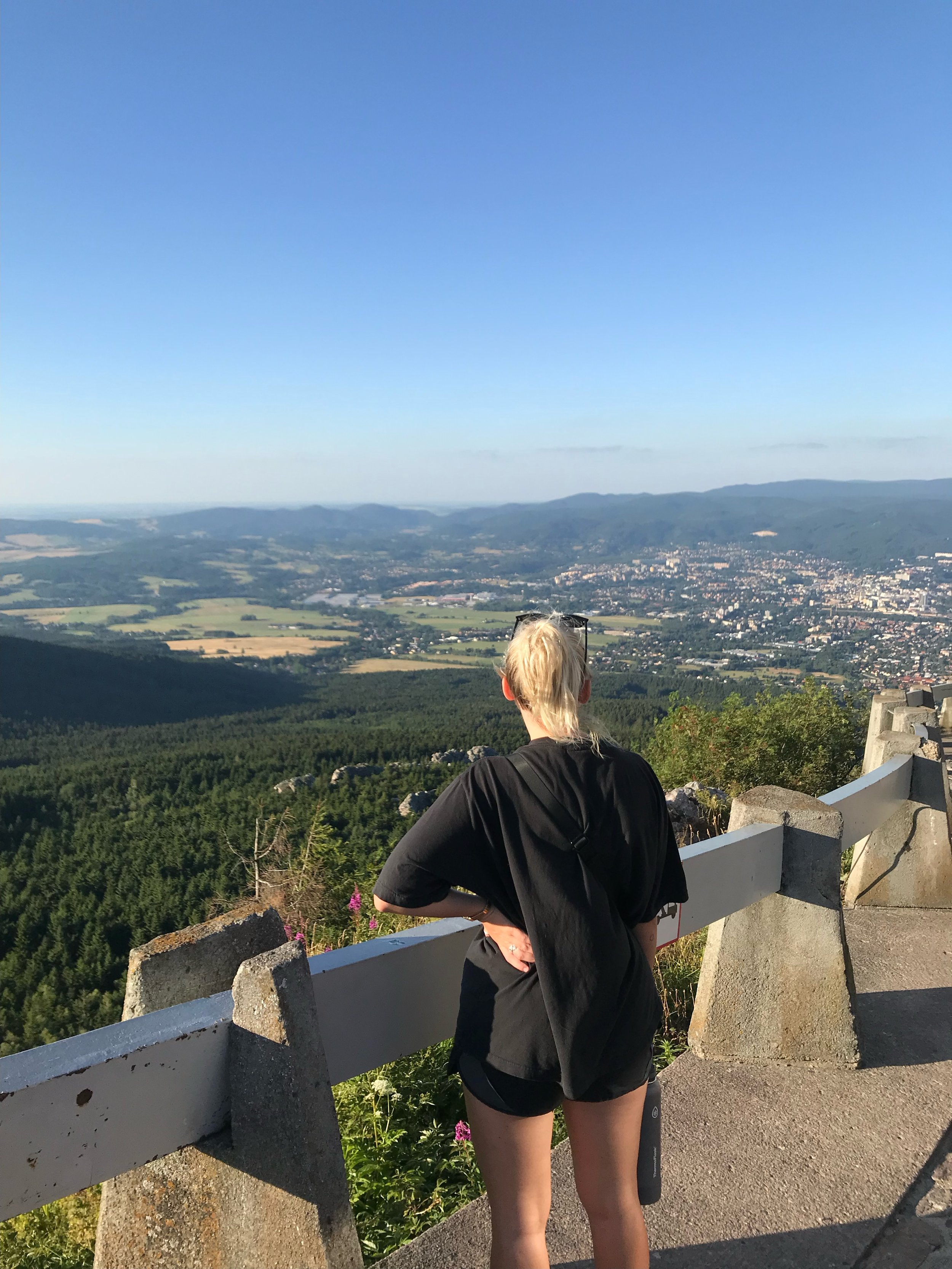
Larchwod Blog
Occupational Therapy & Concussion Management
Following a concussion, an individual may be referred to or seek help from multiple health professionals– one of which is an occupational therapist. But what is occupational therapy and how can it help with concussion management?
Occupational therapy is a regulated and licensed health profession which aims to enable participation and engagement in everyday meaningful activities. Within occupational therapy, “occupation” is loosely divided into self-care, productivity, and leisure. Occupational therapists collaborate with their clients in looking at the strengths and limitations in each of these occupational realms in order to find ways to help their clients do what they want to do, need to do, or are expected to do in their daily lives. Occupational therapists provide a unique viewpoint of assessment, treatment, and recovery as they work in a broad scope of practice areas and can understand rehabilitation holistically and functionally.
Here are 5 ways that occupational therapists can help with concussion management:
1. Education. There is SO much information out there regarding concussion care and recovery, and this can be overwhelming for patients. Occupational therapists can help an individual understand their concussion symptoms and how such symptoms may impact their daily life, as well as providing education regarding what treatment options are suitable and available for an individual’s unique context.
2. Re-engaging in meaningful activities. It is natural for concussion patients to feel disoriented from their daily routine as they learn to manage their post-concussive symptoms. Occupational therapists can work with clients and their families to determine what occupations are meaningful to the individual and identify ways that the individual can re-engage in these activities through a functional cognitive screening, appropriate education, strategies, and support.
3. Cognitive, visual, or vestibular rehabilitation. Occupational therapists are well equipped to provide cognitive assessment and consequent rehabilitation training in the form of education, cognitive skills training activities, and other functional activities to improve cognitive endurance and tolerance to overstimulating environments. Such cognitive skills training includes functional activities aimed at strengthening executive function and utilizing a strengths-based approach in improving function whenever possible. Depending on an individual’s given impairments following concussion, an occupational therapist can also refer a client to other treatment providers who can further assist with recovery.
The “Four P’s” of energy conservation. Source
4. Energy conservation and relaxation strategies. Over the past several years, concussion care has evolved to no longer prioritize prolonged rest following concussion but rather encourage a gradual return to daily activities. Occupational therapists can provide energy conservation strategies, such as the “Four P’s” principle (Prioritize, Plan, Pace, Position), to promote a gradual return to meaningful activities following concussion. Part of energy conservation is also learning how to incorporate adequate self-care and compassion, and understanding your own limits. Occupational therapists can also work with clients on incorporating mindfulness strategies, coping plans, and other relaxation techniques to manage stress and anxiety related to an individual’s concussion.
5. Return to Work (RTW) Assessments and Planning. We know how challenging RTW can be following a concussion as an individual navigates symptom management in new environments. An occupational therapist can assess readiness to RTW, conduct on-site job demands analyses, conduct ergonomic assessments, and collaborate with your employer on gradual return-to-work (GRTW) planning and monitoring. An occupational therapist can also advocate for any accommodations an individual might require for their job following concussion, including both physical accommodations (e.g., prescribing and recommending assistive technology as needed, modified tasks, etc.) and/or cognitive accommodations (e.g., reduced work hours, increased breaks, coping strategies, etc.). If an individual cannot return to their previous job for whatever reason following a concussion, an occupational therapist can also conduct a vocational assessment to help seek new or alternative opportunities that meet their functional abilities.
These are just 5 of the many ways that occupational therapists can help you with managing your concussion. At Davis Occupational Therapy, we offer private and group occupational therapy services to help you with the above aspects of concussion management and so much more. Contact us today for more information!
Click the button below to see our Concussion and Mild Traumatic Brain (mTBI) Injury Resource list for access to more evidence-based handbooks, webinars, podcasts, and apps for concussion management.
Travelling and Mindful Self-Discovery
Hello there, Davis OT! My name is Leila and I am a second year Occupational Therapy student from Western University completing my final placement in Adult OT Services here at Davis Occupational Therapy. For the next two months, I will be working to continue the development of the Nature-Based Mindfulness Program for adults with ADHD, as well as developing some new concussion management resources and programs for Davis OT (Stay tuned for this in the near future!).
I wanted to take this blog post to introduce myself and explain a little bit more about my relationship to nature and mindfulness. My relationship to mindfulness began in my undergraduate days at the University of Toronto, where I completed a minor degree in Buddhism, Psychology, and Mental Health. As part of my degree requirements, I completed several courses discussing the increased use and implementation of Eastern medicine into the West—mindfulness being the most common transferable intervention. I found it enlightening to learn about how consistent mindfulness practice leading to increased self-awareness and a focus on the present moment can provide similar benefits to managing physical and psychological issues commonly treated with medication. Since my undergraduate days, I have regularly practiced mindfulness myself through meditation and reflective journaling, and have experienced the benefits from it first-hand in managing stress and anxiety as a student. I have also had the opportunity to facilitate mindfulness groups and one-on-one sessions within my other clinical placements, and have come to understand mindfulness as a viable and effective treatment modality for most physical and psychological impairments, illnesses, or disorders.
A picture of my Mom and I in front of Ješted, the highest mountain peak in our hometown Liberec, Czechia.
I was born and raised in Toronto, although my entire family was born and lives in Czechia, a small country in Central Europe. Throughout my life, I’ve spent a lot of time travelling back and forth from Czechia to Canada to visit my family and I have been lucky enough to learn and appreciate the differing cultures to a great extent. From a very young age, my Mom instilled in me a defined curiosity in discovering diverse ways of knowing and being through travel. I have since had the privilege to visit over 40 countries around the world, all of which have shaped how I perceive my day-to-day experiences. It is through travelling that I have been able to not only learn about other cultures beyond my own, but also learn more about myself.
Overlooking the landscape of my hometown in Liberec, Czechia.
One of my favourite things about travelling is experiencing the wonderfully diverse landscapes across the world. Urban landscapes are fascinating, but having been born and raised in a city, I have developed a deep appreciation for the relational aspect of nature. I love how the grounding aspect of nature exists no matter where you are in the world, even though our visual perception of it can take different shapes and forms depending on the geographical area you happen to be in.
Most recently in April 2022, I had the chance to explore Jordan: a country in the Middle East with beautiful landscapes, delicious food, and incredibly kind people.
Me in front of the iconic Treasury in Petra, Jordan.
My favourite part of the trip included exploring Petra, a famous archaeological site in Jordan’s southwestern desert dating back to around 300 B.C.. Petra is rightfully considered one of the New 7 Wonders of the World, with beautiful hiking trails leading to tombs and temples carved into pink sandstone cliffs. We spent our time there hiking long trails under the blaring sun heat whilst being rewarded with gorgeous views and occasional cool shade from the insides of tomb sites. I find hiking in such landscapes meditative in itself, and have come to appreciate how mindfulness can organically manifest within nature.
Sand-boarding in the Wadi Rum Desert.
Another part of the trip I adored was roaming through the Wadi Rum desert, which is a valley cut into sandstone and granite rock located within Southern Jordan. This desert has been used as a film site for famous futuristic films, as the landscape looks much like what we would imagine Mars to look like. I had the opportunity to try “sand-boarding”, which was not as easy as I anticipated! Hiking through the desert in the dry heat as my feet sunk into the bright orange sand, I had never felt so happy to feel so exhausted. I love making the effort to be one with nature—feeling the fresh air on my skin, hearing the chirping of the birds and rustling of the wild insects and animals, and simply being present and amazed of the vast natural beauty in this world of ours.
The vast and beautiful Wadi Rum Desert in Jordan!
Well, that’s all from me for now! Thank you for reading what seems to be a snippet of my life story and for learning more about me. I am so excited to use the next two months of placement to work towards instilling my passions for nature and mindfulness in others using the continued development of the nature-based mindfulness programs for adults at Davis OT. Stay tuned for more to come!
Diving Into Mindfulness
Throughout my fieldwork placement at Davis Occupational Therapy, I have been working alongside another student OT, Emily, to create a nature based mindfulness group program for adults with ADHD. Beginning this program, I had dabbled a bit with mindfulness exercises, mostly only completing them during OT classes where we learned about mindfulness and the benefits. I had yet to try mindfulness exercises in my own daily life and/or as a student OT.
This placement has encouraged me to jump right into mindfulness exercises and explore the variety of different settings to practice mindfulness exercises and get first hand experience of the benefits.
Creating this program has given me a wealth of knowledge on mindfulness exercises for attention and executive functions that I will summarize below.
1. Whenever, wherever! A huge advantage to doing mindfulness activities is you can complete them whenever and wherever you need and/or want to! Many activities are short and require only your breath and body (which you always have with you). They can be completed at work, waiting in lines, in your home, even briefly while stopped at a red light. A brief exercise that I have incorporated into my day is called “Phone Breath”. In this exercise, whenever I receive a text this is a reminder for me to take a mindfulness breath and bring my awareness to the present. This can also be done whenever you receive an email, or while stopped at a red light while driving. I find this exercise to be helpful to provide me with short reminders throughout the day to bring may awareness to the present and keep me on task. Tell us in the comments below where you complete mindfulness exercises!
2. Benefits, benefits, benefits! Mindfulness exercises have so many benefits. Exercises can be tailored to provide you with the benefits you are seeking. Different exercises can help with racing thoughts, drifting attention, pain and restlessness, managing emotions and being in the present. This makes mindfulness practice adjustable to what symptom or experience you are having in that moment. Our new mindfulness in nature group program provides participants with a variety of different mindfulness exercises and a toolkit with all of the exercises plus more to have with them outside the program.
3. Mindfulness is like a muscle! Like many activities, with practice, mindfulness exercises become easier to complete, more automatic and more easily incorporated into your daily life. We like to say that mindfulness is like a muscle, the more it is worked the stronger it gets. Thus, in order for me to feel comfortable and build my mindfulness muscle, I practiced different mindfulness exercises throughout my placement. This practice has prepared me for completing mindfulness exercises with clients and answering questions about mindfulness exercises in practice.
We are currently recruiting participants for both in person and virtual pilot sessions for our Mindfulness in Nature Group Program. Click the button below to explore pilot session options and sign up! Pilot sessions are donation based. All donations will go towards funding to send a child to camp at the Larchwood Farm Nature OT Summer Camp!
Find your love of the outdoors!
Hi everyone! My name is Heather, I am an OT student from the University of Toronto working with Alanna on the adult side of Davis Occupational Therapy. This will be my third placement, I am very excited to support the team in developing a program to support adults in the Toronto Area.
Growing up I spent all of my time outdoors. I loved to run through forest trails, explore new areas, swim at the beach, climb trees, build snow forts, and play at playgrounds. When I think back to childhood memories of being outdoors, I feel the warm sunshine on my face and can visualize my child self smiling. Being outside is the perfect environment to foster independence, curiosity, and a love of nature from a young age.
As I became an adolescent, I found myself spending more and more time indoors whether that was with friends, extracurricular activities, or school work. I remember losing some of my love for nature, fresh air and the warm sunshine on my face. But then, I began working at a summer camp where I spend all hours of the day outdoors for the next 6 summers. This job pushed me to start exploring the outdoors again, find new ways to enjoy time spent outside and how to share nature and sunshine with others. I regained my love for the outdoors, which has only continued to build.
With this new appreciation for the outdoors, I have learned to recognize the vast variety of activities that can be explored in nature. One of the most unique aspects of nature is the ability to use and appreciate nature in all points of your life.
Whether that be as an infant exploring sand for the first time, finally climbing to the top of a tree as a child, sharing forest trails with campers as a young adult, exploring mountains with your mom, as my mom exploring mountains with her daughter and now learning the benefits of incorporating nature into therapeutic practice.
When given the opportunity to help create a program for adults using nature as a therapeutic vehicle I was thrilled. Not only will I have the opportunity to learn how to create an occupational therapy program, but I will be able to incorporate my love of nature into the process. A main goal of mine with this new program is that we will be able to use nature in not only a therapeutic sense but to also help others regain and/or grow their love of nature.

















